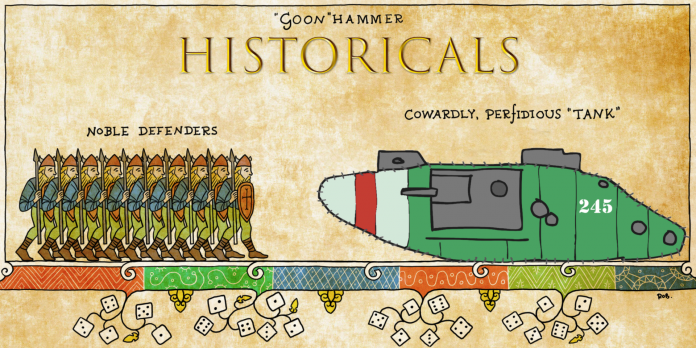The Great War has been something of a passing interest for me since I took a course on it in college. I needed to fill out my general education requirements and wanted a history class, but the wehraboos had already filled up the class on the Second World War so I opted into the prequel. Serendipity did me a solid with that one. In addition to learning that the 20th century grindset really kicked off during the war, I got to write a paper about Jutland that would later grow into an all-consuming fascination with big boats. As a bonus, I didn’t have to watch the professor gamely field questions-that-were-actually-essays about the most trite Monday-morning-quarterback-ass counterfactuals that your average undergrad could dream up. I read a lot of books after the fact, but that random elective back in 2002 was what started me on the path to dad games.
I settled on France in particular, because I’m a contrarian. There aren’t a lot of English-language French accounts compared to British and German, which makes it more fun. They also get a bad rap for how hard they got owned in the next war, so getting deep into their Loser’s Mystique seemed like a good time.
I think it’s worth understanding why that happened. Most of the western front, for most of the war, was on French territory – that is, in France proper – and while that might have given a modicum of home field advantage, it also meant that every hill and farm that was churned into muddy craters by shell impacts, every village blasted to splinters, that was their problem. The physical and psychological scars of that aren’t going to just heal over in 20 years. In some ways none of them ever left the trenches. Many of them also never left the trenches but in a more literal way. France simply ran out of dudes. Something like a million of their troops died in roughly four and a half years of fighting. Note: that is only troops, not anyone else, and only killed, not maimed. The peaks and valleys smoothed out, and adjusted for population, it is the equivalent of suffering two daily 9/11s. Consider how a single 9/11 drove the world’s most powerful country (justifiably) berserk and changed the last 20 years of history (get absolutely owned, Francis Fukuyama), and then imagine an endless series of planes, arriving in squadrons to pulverize a new city, every day, for nearly half a decade.

So even if they won, with that many dudes chunked into hamburger meat they didn’t really win. Swathes of the country were, and in some cases still are, uninhabitable. An entire generation was wiped off the surface of le monde, and everyone left over was traumatized to a degree that I don’t think any of us can understand, though we’ll get an idea of it when the Water Wars start up in earnest a few decades from now.
All of that said, the main reason I became obsessed with France during the Great War is simply this: they had incredible outfits. Their early war fits went off hard, with red pantaloons and kepi hats, gallantly charging forward with their weird little Lebel rifles and revolutionary but undersized 75mm field guns. Despite how many of them died along the frontiers, the popular notion that the French are a bunch of soft baby losers is straight up propaganda, because these guys were not fucking around. They had the drip – in French I believe the term is elan – to compete with any army on the continent. Strategically and logistically there might have been some problems, but in that they aren’t exactly unique. Blame enough to go around on that one.
The rot in my head eventually spread to researching the exact headcount and disposition of line infantry companies and artillery battalions, and I fell in with a bad crowd (historical wargamers). Which led, inexorably, to 6mm metal miniatures, the only scale where a project like that is remotely feasible. After a bit of cyberbullying, I embraced my nature and put in a Baccus order. I may have gone a little overboard.
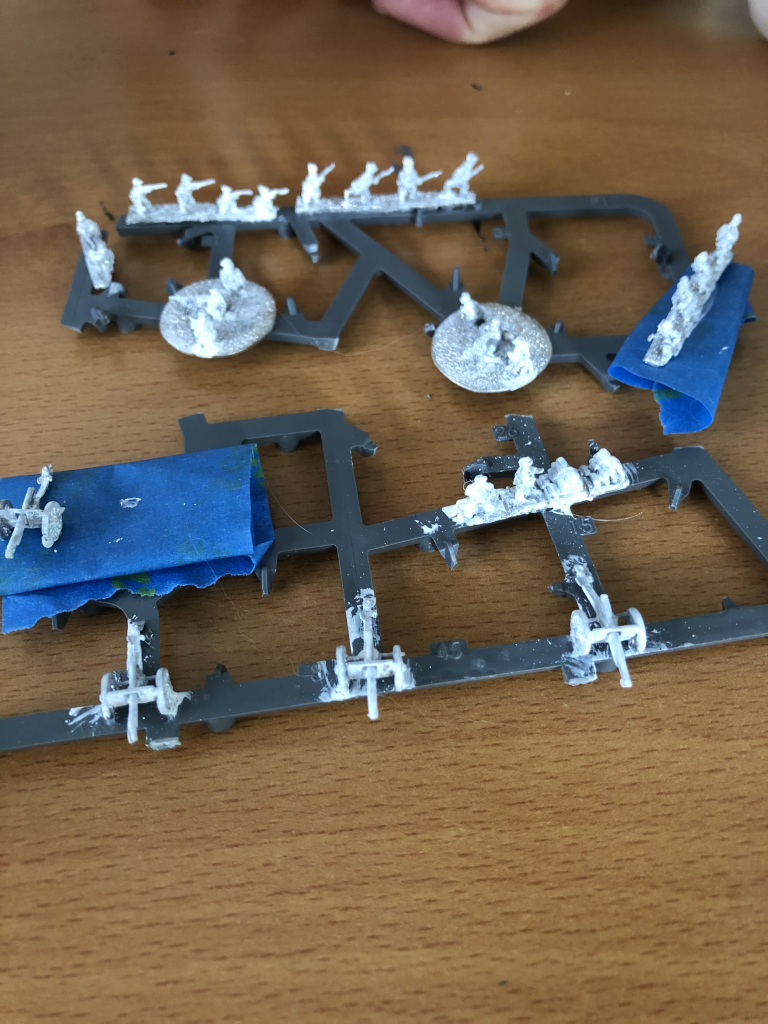
For the price of 40k Combat Patrol (CompTrol), I received 24 field guns (the venerable French 75), 30 Hotchkiss machine guns (with crew), a grip of random horses, tanks, howitzers, and headquarters tents, and – there is no getting around the aura of excess here – fully 600 rifle-toting infantry, along with roughly two square feet of MDF bases. I don’t want to bring the mood down but even if I painted all of them they represent about 18 hours worth of fatalities on the front. All of the models I have painted so far could be dismembered by a single minenwerfer shot. Neat!
This was my first experience with God’s Only Chosen Scale, and I gotta level with you: it rules. The little guys are easier to paint than I expected, with a full squad of 15 models taking about an hour start to finish, including drying time. They’re small enough that you don’t bother with highlights or precision, requiring only five or six paints to be approximately in the correct locations, with an an all-over wash that both provides definition and smudges out the inaccuracies. There is, unfortunately, an element of eyestrain.
The sculpts themselves are pretty good. You can’t realistically talk about character or detail at this scale – I defy anyone to tell the difference between a Berthier and a Mauser when the gun is a quarter-inch long – but they’re recognizably human and have all the parts in the right places. Other than straightening out some bayonets and wagon wheels, there is no assembly to speak of. You just grab a handful of dudes, bend them a few times (note that they will break if you get too rowdy with them), and start painting.
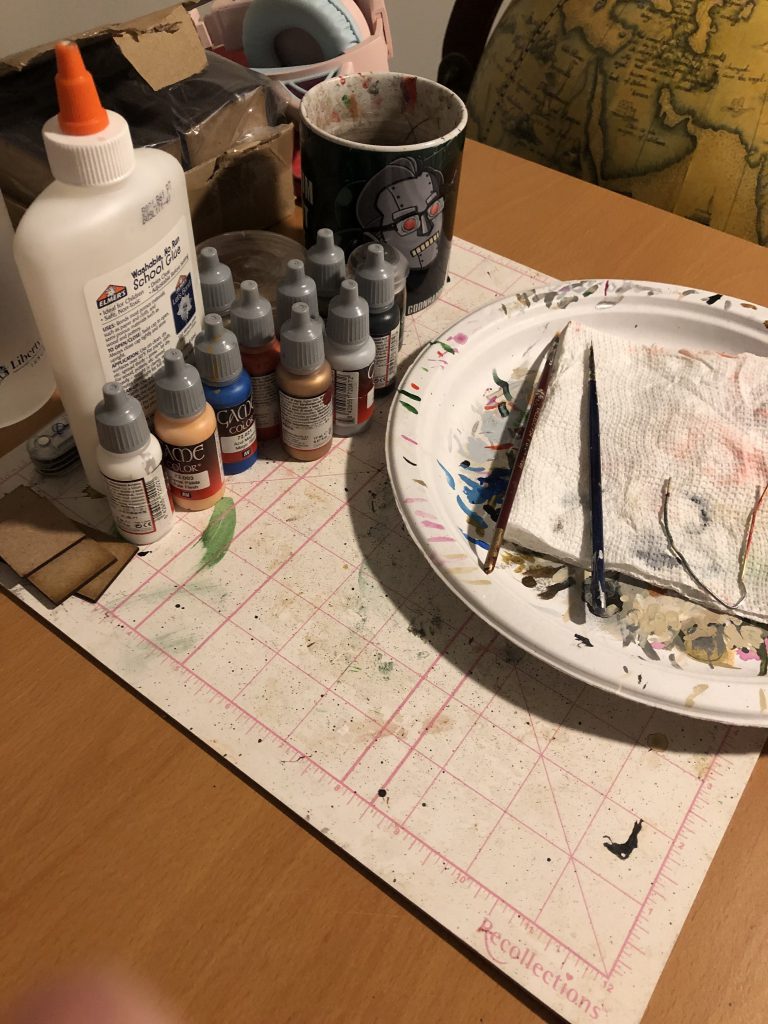
I use a chopped-up bit of sprue as a painting handle, and PVA glue a strip of models to it. Priming is done with brush-on Vallejo white. Brush because it’s not worth a rattlecan for such lil’ guys, and white because at this scale you need all the brightness and saturation you can get. Then it’s just a matter of blocking in your colors – flesh and wood, black for the boots, a dot of metal on the bayonet, and red/blue for their outfits. In retrospect I could have gone for the iconic late-war Horizon Blue uniforms and saved myself some work here, but it just doesn’t pop the same.
The field guns are even easier – an all-over coat of Vallejo’s Ghost Gray is a passable match for what French artillery looked like in 1914, and with a bit of black around the rims of the wheels and a dot on the tip of the barrel, those are done. Every model then gets drowned in Agrax Earthshade top to bottom, and we’re on to basing.
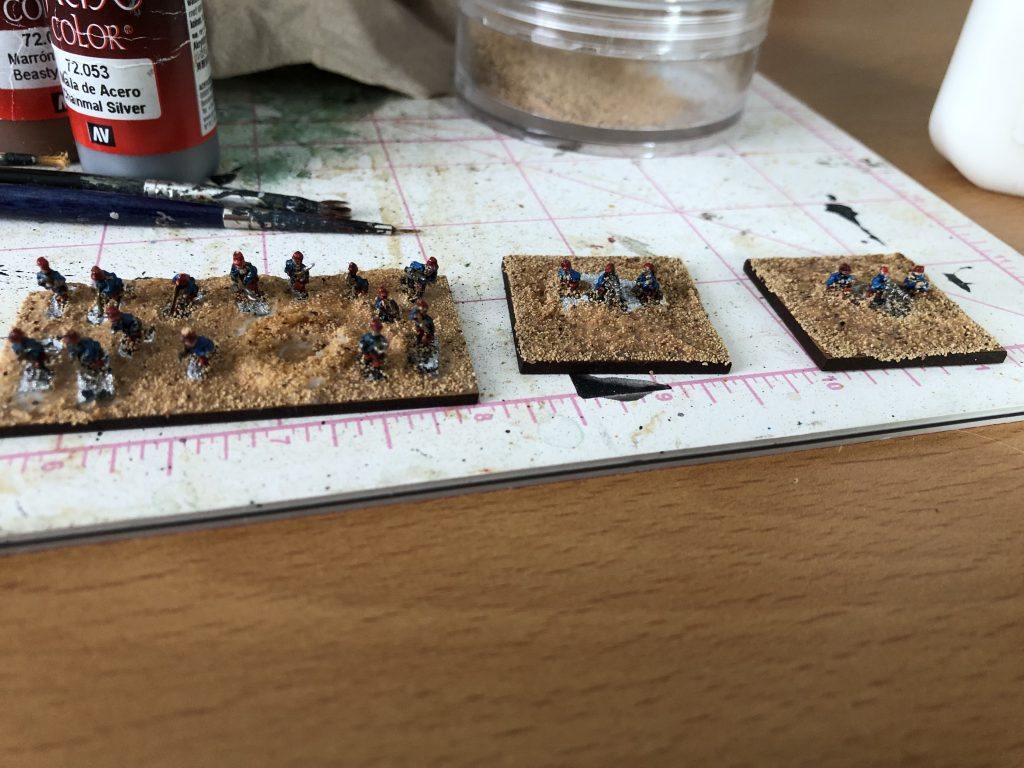
Basing is probably more fun at this scale than any other. The models are so friggin’ tiny that you have room to make each base a little diorama. I went for – obviously – torn up mud hell, and experimented with building up landforms with wadded up paper towels, covered in some different mixes and layers of glue and basing paste and sand, painted with browns and greens and washed again with Agrax. I’m not super happy with the results so far, but here is the strength of 6mm as a scale: who cares.
I’m going to eventually paint hundreds of these things, across dozens of bases, so if the first few are bad nobody’s going to notice. They are too small and there are too many of them to get hung up on that. Fix your mistakes, to a point, but if you put a little too much red on some pants, don’t make it weird. It’ll get covered in mud anyway. There’s something very freeing about that, and combined with the sheer scale of the armies – where else can you field multiple companies of troops backed by full artillery batteries? – it makes for an impressive sight without a lot of stress.
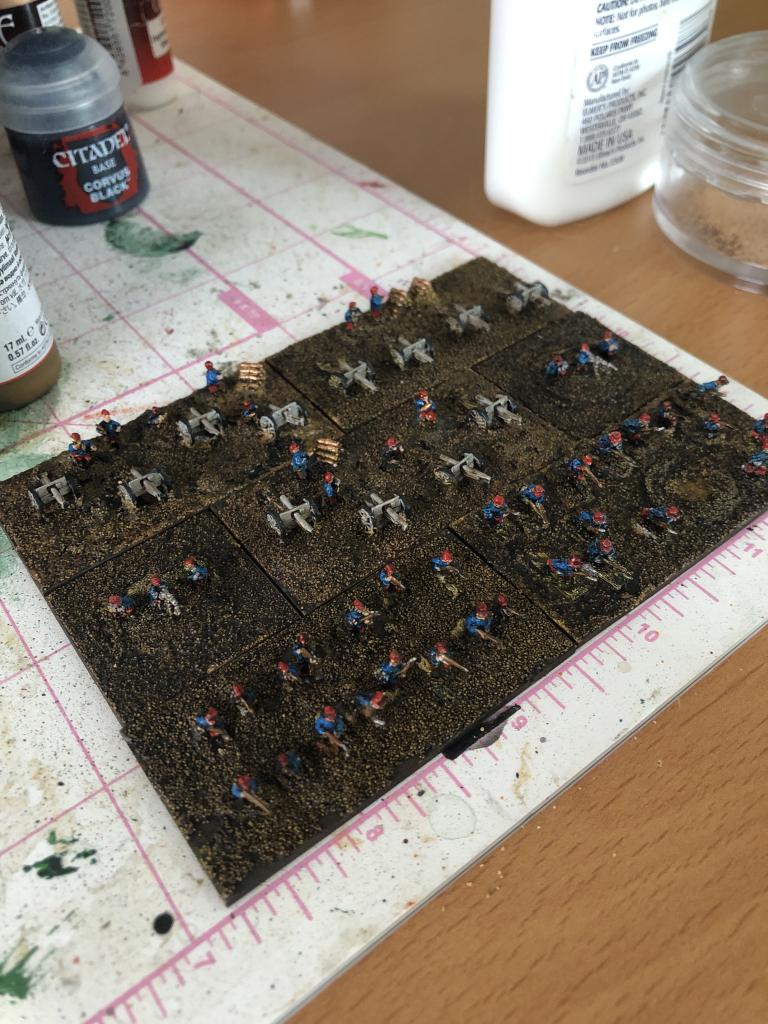
I don’t have any plans to finish the project or play any games with them. I like working on them as a new type of thing to paint, but I think the main motivation is just that it’s an excuse to do research. Sure, I don’t need to have models in order to flip through Osprey books, but it gives me a justification to do so. It would be weird to pore over old orders of battle to know how many NCOs were in a squad and how many machine guns they had in support, unless it’s for a game. Then it’s normal. It’s fine.
But I’m not going to aim for accuracy at an individual level. I don’t care if the exact shade of red is correct, just that it gets the point across. Aside from how physically small the models are, the very nature of this army, in this war, makes any formation less than a division fairly interchangeable. In the end, as with all historicals, it’s up to the modeler/gamer to decide their own level of accuracy, and anyone who disagrees with me is free, obviously, to be wrong.
I love these little dudes. The sculpts are great, even if there’s only maybe a dozen different types of guy each repeated 40 or 50 times, with an appropriate amount of detail given their scale, and only a little fragile. The Baccus ordering process is that you get a Paypal receipt and then 2-12 weeks later a tiny cardboard box shows up at your house absolutely stuffed with models and you will never get that box to close again because you aren’t a packing wizard like they are. They’re cheap to buy, easy to paint, and inexplicably fun to look at. Don’t think about what you’re going to use them for, just go ahead and buy way too many models. You deserve a treat.
Have any questions or feedback? Drop us a note in the comments below or email us at contact@goonhammer.com. Want articles like this linked in your inbox every Monday morning? Sign up for our newsletter. And don’t forget that you can support us on Patreon for backer rewards like early video content, Administratum access, an ad-free experience on our website and more.
